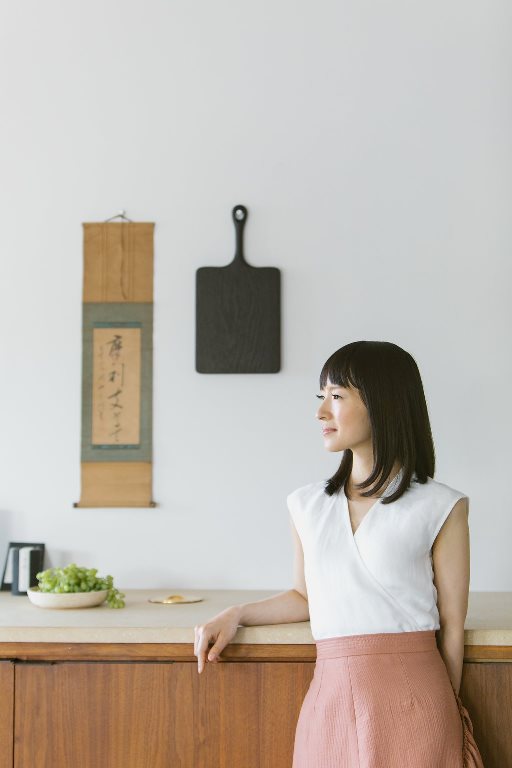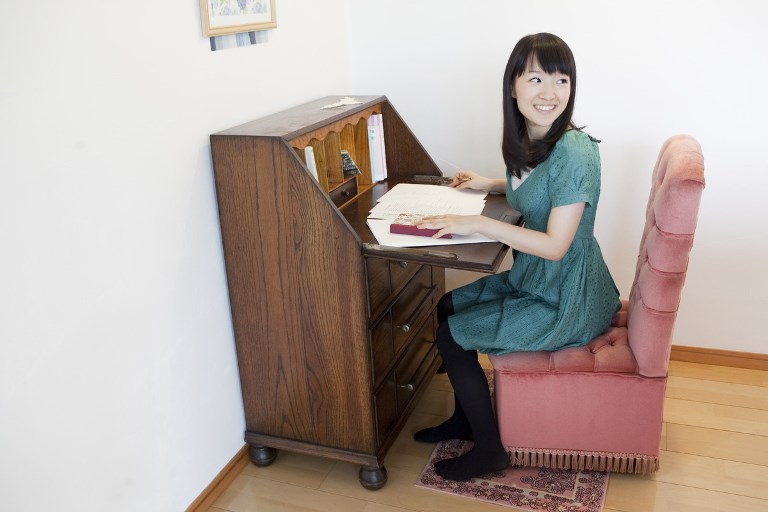You might have heard about a TV show that’s encouraging people to declutter their homes and turn their lives around. Catherine Schulte unpacks the tidying-up sensation that’s taken the world by storm.
The show is called Tidying Up with Marie Kondo and has been an incredibly successful series which tells the story of the 19-year-old student’s adventures starting an organising business in Japan.
Her book, The Life-Changing Magic of Tidying Up: The Japanese Art of Decluttering and Organising, has only added to Kondo’s credibility.
The TV show has attained cult-status, with many viewers adopting what they call The Konmari Method – and from what we can see, it’s working.
The method can be sustained long-term by those who decide to practice it. It certainly worked on this writer. After watching one episode I came out with four large bags of things for the tip.

Image source: konmari.com
The show’s central message is to hold onto things that ‘spark joy’ and dispose of those which don’t (apart from important must-keep items).
The Konmari Method involves grouping your possessions into five categories as follows:
- Clothes
- Books
- Papers
- Komono (Miscellaneous stuff)
- Sentimental
The idea is to lay everything out that you have in that order, one by one.
You start with clothes, then move onto books, and so forth.
Horse around with clothing
In the series, you first see the participants bringing out huge amounts of clothes and placing it on their beds, aghast that they had collected so much.
Many often have their sale tags still attached.
They must organise each item, deciding whether they want to keep it, donate it, or put it in the bin.
They must be mindful just how much storage space they do have, to be able to keep what they want. Often a big issue for people is lack of space and too many things.

Image source: konmari.com
Book in a culling session
Books often form a great source of anxiety for the participants. Dealing with clothes is one thing, but books are another.
In some homes, they have hundreds upon hundreds stacked up around the place. This is not healthy for anyone because of the vermin they attract. Not only that, the information can get old and out-of-date.
Follow the paper trail
Papers are also a great source of stress, with some desks piled high with hundreds of unsorted, unorganised documents.
Many have never been read but exist in the vacuum of ‘just in case’. We’re certainly all guilty of this, and need to find a way to manage our papers effectively.
Tackle the junk drawer
The word Komono means ‘miscellaneous’ in Japanese and refers to accessories or small items.
Kondo suggests the following order for tackling them:
- CDs, DVDs
- Skincare products
- Make-up
- Accessories
- Valuables
- Electrical items
- Household equipment
- Household supplies
- Kitchen goods/ food supplies
- Other (e.g. spare change)

Kondo also recommends discarding gifts that don’t spark joy, remembering that these gifts have already fulfilled their role in the moment you received them.
Tap into that mushy feeling
‘Sentimental’ rounds out the five themes nicely, leaving room for those items which have touched our heart and hold deep meaning.
In general, her motto is that the memories you have in your mind and heart are more important than the physical items you keep.
Letting go of things doesn’t mean you let go of your happy memories and past experiences.
When reading reviews of Kondo’s work, it comes through that participants are often quite at ease because Kondo does not pass judgement on them and what they want to keep.
If we feel happy doing something, we will often keep it up. The factor of outside judgement does not exist, so participants often feel happy maintaining the changes.
While this method may not be for everyone, the message is valid for a large number of people. It’s healthier for our minds and bodies to live without clutter or mess, in environments that are clean, tidy and well organised.
Will you try The Konmari Method? Head to konmari.com for more info.
